Like this article?
Go on, give it a kudu!

Published on January 30 2023
Written by:
Neil
2321 views
Between October and December each year, 8 to 10 million giant fruit bats migrate through Kasanka National Park
November is the best month for viewing the bat migration
The annual bat migration is the world's largest mammal migration
Neil Raffan, long-time YAS member and African safari aficionado, returned to Kasanka National Park in November, marking safari number 33 in 2022. He graciously shared his personal experience with Your African Safari. If you’ve not yet been to Zambia, Kasanka is another reason to visit this amazing country.
You know that feeling when you think there is unfinished business? A return to Kasanka National Park felt like that to me.
We arrived in time for lunch on Saturday, the 19th of November. What would this visit be like in comparison to the one made over eight years ago? Was the anticipation OTT? This trip had been in the planning for years, pre-pandemic.
We were visiting Kasanka National Park for the largest mammal migration in the world. 10 million straw-coloured fruit bats pass through here every year. Yes, the largest mammal migration in the world.
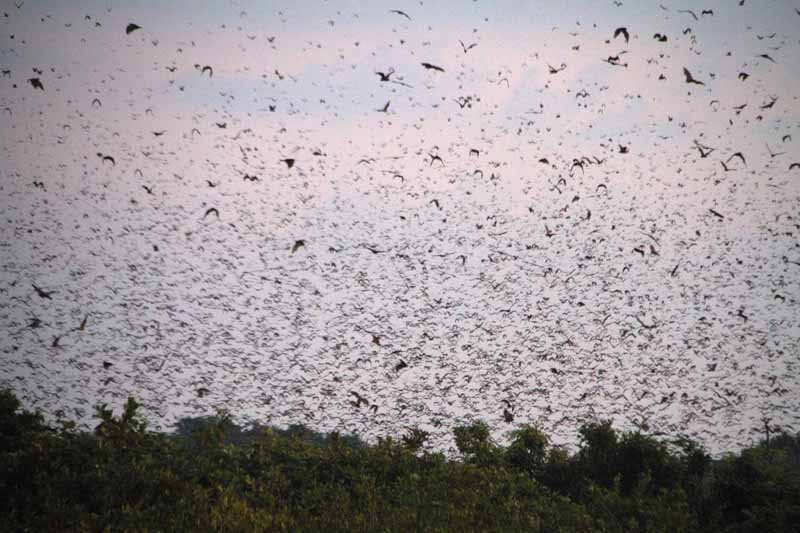
Yes, 10 million bats fly in from as far as West Africa for a six-week feasting, from the last week of October to the first week of December. Their main food is wild fruiting trees but they aren’t averse to helping themselves to local orchards.
But 10 million! What would that look like? How and when would we view the action?
As we did eight years ago, we stayed at Wasa Lodge, just 12km from the entrance gate. In addition to their older, rundown rondavels, Wasa now has two very swish, modern build rooms.
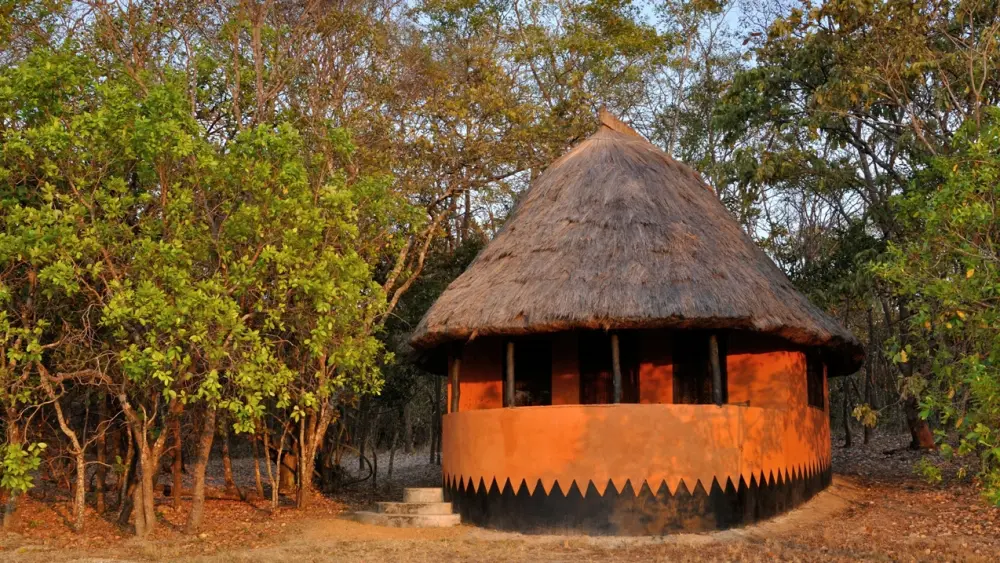
The rooms come complete with private decks that look across the Wasa shallow ake, where sitatunga can be seen feeding at some distance. But the bats…what was the plan?
Fruit bats are viewed dusk and dawn as they depart to feed and return from feeding, respectively. The bats are viewed from booked platforms of different elevations, like 8 and 11 meters, or at public viewing areas at ground level. The drive from the main lodge averages around forty-five minutes with no sighting stops.
For the first of our three-night stop our guide chose the eight meter platform for our dusk viewing. We’d access these platforms via ladders. Sundowners loaded, we set off. From parking to the hide ladder is but a brief walk over level ground. Was it worth it? 100% worth it! Words cannot do justice to the spectacle of countless bats departing from their daytime tree roosts. Flying bats as far as the eyes can see.
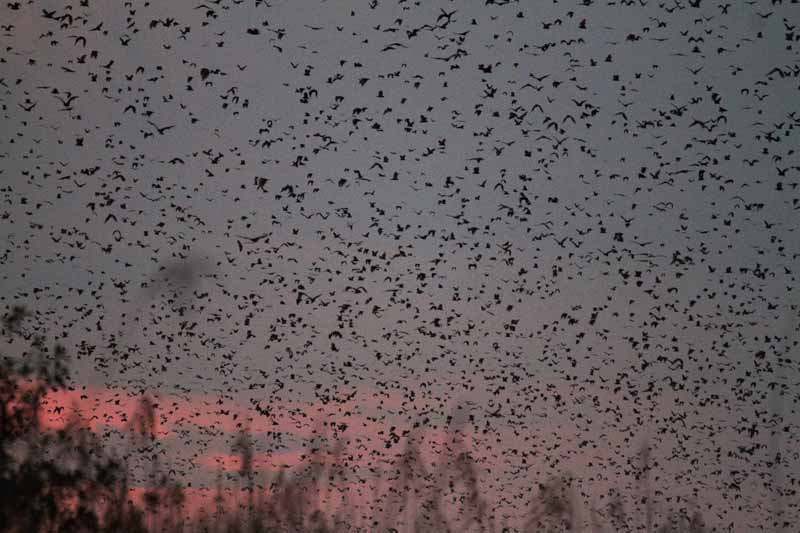
The view through binoculars is like immersing oneself in an aquarium. Who needs drugs, recreational or otherwise?! Cupping of your palms behind your ears provides an unbelievable depth of stereo sound to the experience. It takes some time for 10 million bats to fly off, so it is pitch black at the base of the viewing platform by then. Do not forget your headtorch.
The plan for the next morning’s dawn viewing was scuppered by rain. Our guide decided that our second evening of bat viewing we would be from one of the public viewing areas. You sit at virtually ground level. You can also bring your own chairs, drinks and snacks. This was another amazing experience, as the sky filled with bats rising above us from the trees across the papyrus marsh. The bats’ seeming blackness across the ever-changing color of the sky. The walk to and from this location is somewhat tortuous and damp, in places walking along planks of wood barely above the level of recent rainfall. Don’t forget those headtorches for the return journey.
That second night we went to bed with fingers crossed that it would be dry at 3 am. Yes, 3 am, when we were due to receive our wake-up call. Headtorches required this time for our dark walk to the eight meter high viewing platform.
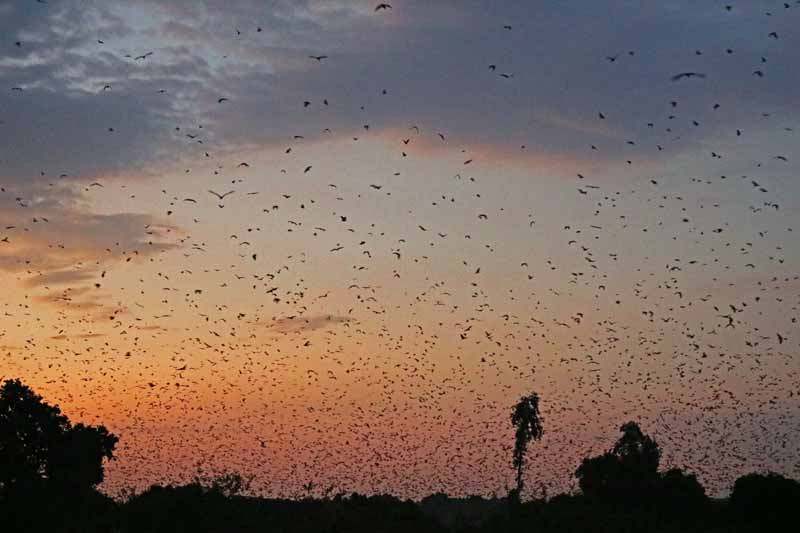
Impossible to choose which of the bat viewings was the best. Although there is something special watching the sky fill with returning bats, tree branches drooping from the arrivals’ weight. Sheer animal magic.
Despite no sightings of Böhm’s bee-eaters, the birders in our party were delighted with spotting Ross’s turaco. Without birding as such we spotted over eighty species on a three-night stay.
You can tell how much I enjoyed revisiting Kasanka National Park. Indeed, I did, though some things haven’t changed. While the two newer rooms are very comfortable and complete new builds, the others—rondavels—remain run down. The financial precariousness of a park run by a trust remains ever-present. How to sell the park for the remaining forty-four weeks of the year? The landscape is still so beautiful and varied: forests, woods, rivers, savannah and marshes.
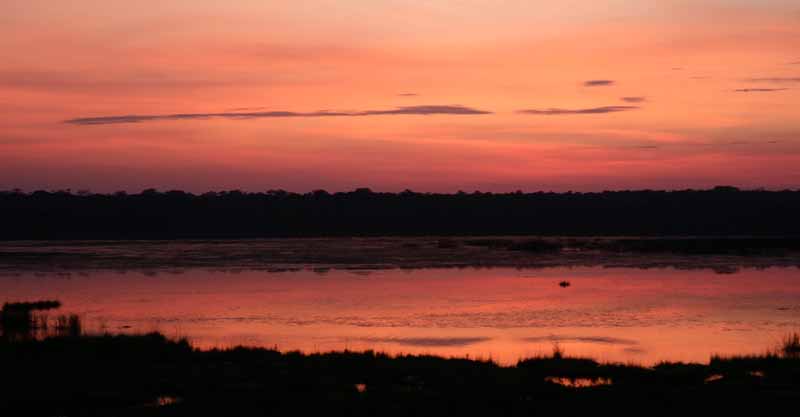
A paradise for birders with close to five hundred species. The fauna adds to the insight gained from walks. For example, we took pleasure in correctly identifying an African locust bean tree that initially had us baffled. The vehicles are only marginally better than those from eight years ago. Ladders are carried for passenger access once away from the main lodge. The open-to-the-elements vehicles still have an enclosed cab. This means that the guide, who was top of his game, still needs to slap the top of the driver’s cab to get him to stop. As per my previous visit, this is not optimal for any viewing. The passenger benches are also too narrow for comfort. Personally, I would not venture on a further river cruise until they have a more passenger friendly boat. Such a shame as it should be such a pleasant experience. There is plenty to see, including local specialities like the half-collared kingfisher.
On our last evening, after our early start, we decided to enjoy our sundowners at the park’s main boma. To our delight we were able to enjoy a slimmed-down version of the bats heading off to feed, as a large swathe flew overhead. Thank you, bats! But I had to see the sitatunga again, so I arranged for an early, but daylight, start for the following day.
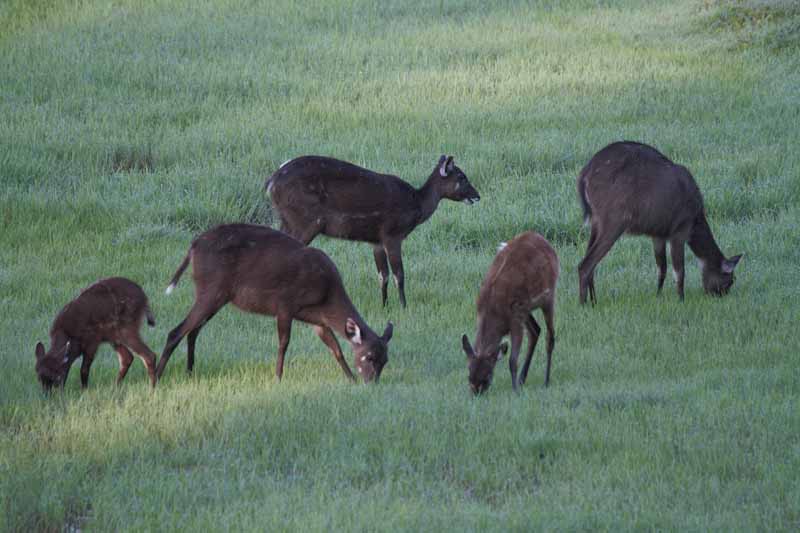
The sitatunga hide is approximately thirty minutes from the camp. It affords secluded views of the still-reclusive sitatunga as they graze on the marsh fringes. The hide is a short walk from where you park and about five meters off the ground. The hide works perfectly; over a dozen sitatunga with young grazed, unperturbed. We left Kasanka later that morning. The atmosphere at Kasanka was much friendlier and far more relaxed than eight years ago. The fact that we virtually drank the limited bar dry did not matter, as the pleasure in our own company was sufficient.
Would I return for a third visit? A resounding yes! Why? I’ve yet to experience all that Kasanka has to offer. My next challenge is to enjoy a comfortable river cruise, learn more about Kinda baboons and partake in birding and flora walks.
All images and content property of Neil Andrews.
https://www.zambiatourism.com/the-worlds-largest-mammal-migration/
Has been on: 10 safaris
Though born in Mauritius, some years ago, it was not until 1996 that I first went on a safari holiday. I have been back to Africa at least once every year since - a bit of an addiction. In my particular case Arthrogryposis Multiplex Congenita affects my arms and legs - most noticeably hands and feet. I hope to share experiences and how a disability does and does not affect safari travel. Named Neil Raffan Andrews I write under the name of Neil Raffan. The ease with which one can self-publish has not only allowed me to publish my back catalogue of novels but also more recent pieces which include travel writing.
© Your African Safari Ltd, All rights reserved.
Your African Safari is a safari-planning and safari review site. It was created to help support a healthy African wildlife population. All reviews are vetted before being approved and only ethical tours are published